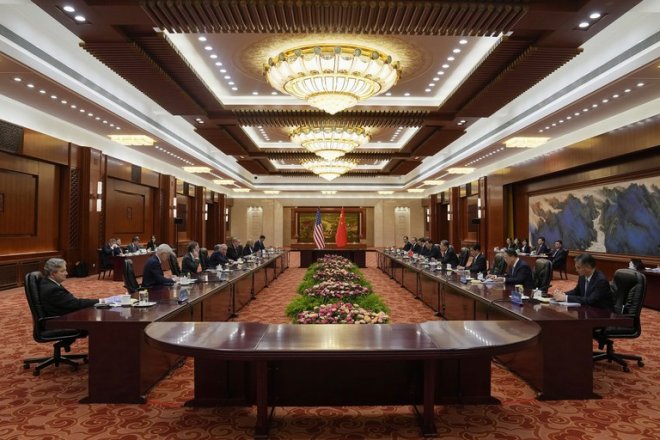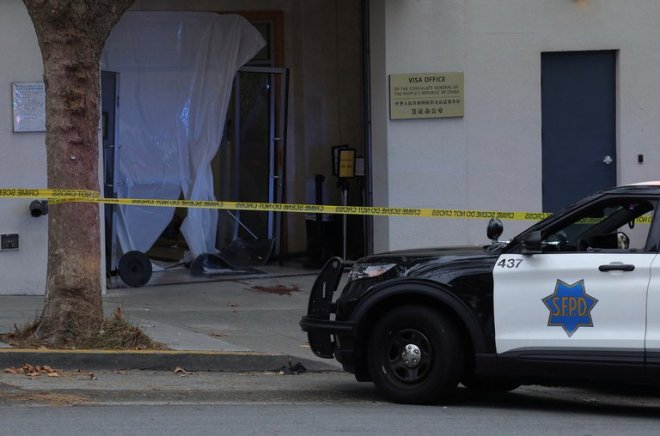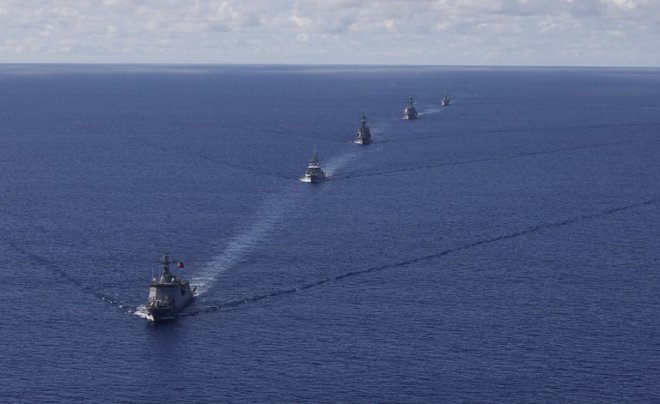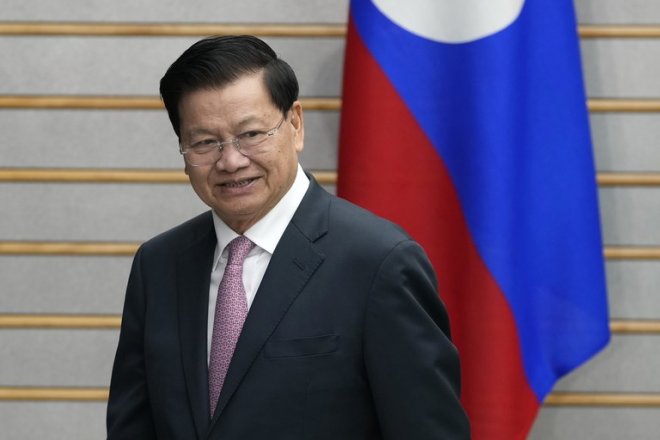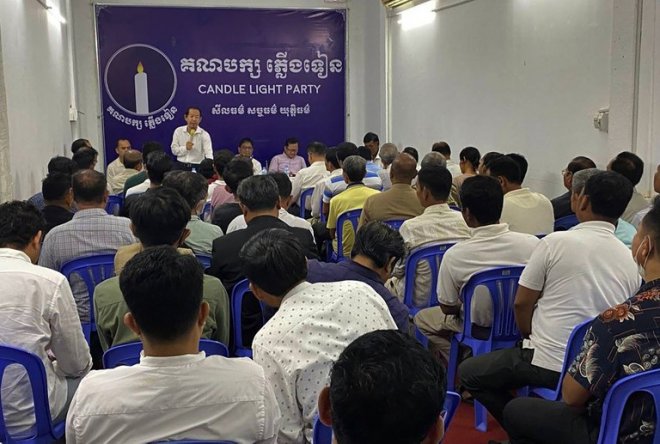China’s coast guard patrols site of Indonesian gas field
The China Coast Guard’s leading ship has been patrolling the waters around Indonesia’s Natuna islands in the South China Sea just as Jakarta approves a plan to develop an offshore gas field there, ship tracking data shows.CCG 5901, the world’s largest coast guard vessel, has been in the area since Dec. 30, according to the ship tracker Marine Traffic.
Earlier this week, the Indonesian government passed the first development plan for the Tuna Block, which is located within Indonesia’s exclusive economic zone (EEZ) but also inside the so-called “nine-dash line” that China uses to claim historical rights over most of the South China Sea.
Last month, Vietnam and Indonesia concluded talks on the boundaries of their EEZs, a move likely to irk China as the two countries’ claims also lie within the “nine-dash line.”
Chinese coast guard vessels have been patrolling the area to back “Beijing’s ridiculous claims in the South China Sea,” said Satya Pratama, a senior Indonesian government official and a former Bakamla (Indonesia’s Maritime Security Agency) captain.
But the presence of the CCG 5901, dubbed “the monster” for its size and tonnage, may signal a step up in China’s assertiveness.
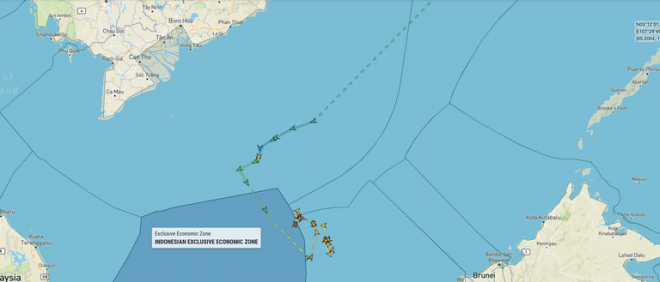 Past track of Chinese CCG 5901, the world’s largest coast guard vessel, on Dec. 29-Jan. 4, 2022. Credit: MarineTraffic
Past track of Chinese CCG 5901, the world’s largest coast guard vessel, on Dec. 29-Jan. 4, 2022. Credit: MarineTrafficMulti-billion-dollar investment
Indonesia’s Upstream Oil and Gas Regulatory Task Force (SKK Migas) has approved the plan to develop the Tuna oil and gas field, also known as the Tuna Block, an official confirmed to RFA affiliate BenarNews.
SKK Migas spokesman Muhammad Kemal said the plan involves an investment of nearly U.S.$3 billion up to the start of production.
Indonesia began drilling exploration wells in the field some 10 years ago, Kemal said, adding that it is expected to achieve a “peak production of 115 million standard cubic feet [3.3 million cubic meters] per day in 2027.”
The field is operated by a local unit of Harbor Energy, the largest London-listed independent oil and gas company.
Natural gas from the Tuna field is planned to be exported to Vietnam starting 2026 and may bring an income of US$ 1.24 billion a year, the spokesman told BenarNews.
China has so far not protested through official channels against the Tuna Block development plan but SKK Migas chairman Dwi Soetjipto said in a statement that there will be activities “in the border area which is one of the world’s geopolitical hot spots.”
Reuters quoted Soetjipto as saying that the Indonesian Navy would “participate in securing the upstream oil and gas project” which can be seen as “an affirmation of Indonesia’s sovereignty.”
The Tuna Block lies entirely inside Indonesia’s EEZ and just 13 kilometers (8 miles) from the border of the Vietnamese EEZ but the area is frequented by Chinese law enforcement and fishing vessels.
 Indonesian President Joko Widodo visits a military base at Natuna, Indonesia, near the South China Sea, Jan. 9, 2020. Credit: Antara Foto/via Reuters
Indonesian President Joko Widodo visits a military base at Natuna, Indonesia, near the South China Sea, Jan. 9, 2020. Credit: Antara Foto/via Reuters ‘Monster’ vessel
A U.N. tribunal in 2016 invalidated the “nine-dash line” but Beijing has so far rejected the ruling, insisting that China has jurisdiction over all areas within the line.
Indonesia, Vietnam and Malaysia have all accused China of disrupting their oil and gas exploration activities with frequent incursions by Chinese coast guard and maritime militia ships, leading to confrontations and incidents.
In 2021, Chinese survey ships and coast guard vessels loitered uninvited for almost a month in the North Natuna area, where Indonesia’s oil and gas exploration was underway.
Since the latest developments, “Chinese coast guard vessels" presence here will either be at the same frequency, or even increase,” said Jakarta-based Satya Pratama.
The 12,000-ton CCG 5901 left Sanya port in Hainan island on Dec. 16 and arrived in Indonesia’s EEZ on Dec. 30 after showing up at Vanguard Bank, a known South China Sea flashpoint between Vietnam and China.
The coast guard ship, armed with heavy machine guns, also has a helicopter platform and a hangar large enough to accommodate larger rotary wing aircraft.
By tonnage, the CCG 5901 is double the size of a U.S. Navy Ticonderoga-class guided missile cruiser and is also bigger than an Arleigh Burke-class guided missile destroyer.
Roy Gozali Idrus in Jakarta contributed to this report.
BenarNews is an RFA-affiliated news service.
[圖擷取自網路,如有疑問請私訊]
|
本篇 |
不想錯過? 請追蹤FB專頁! |
| 喜歡這篇嗎?快分享吧! |
相關文章
AsianNewsCast









